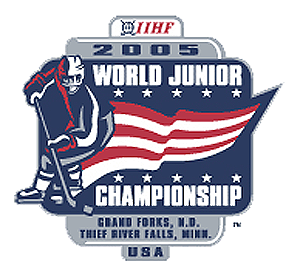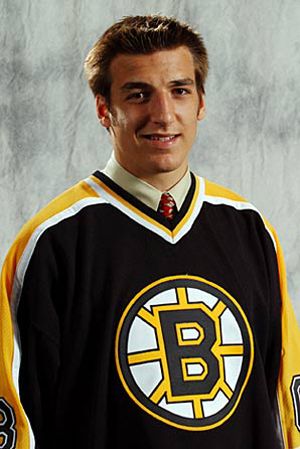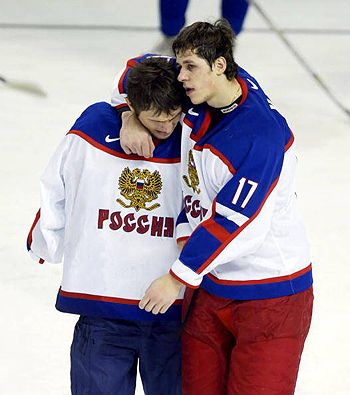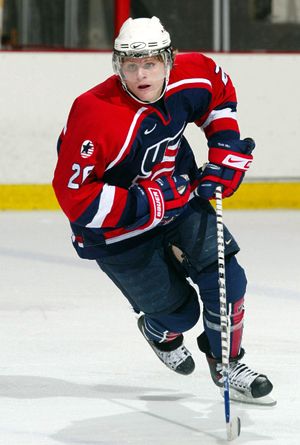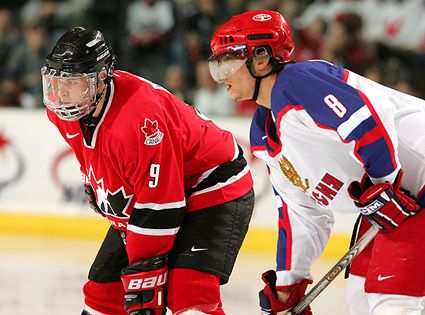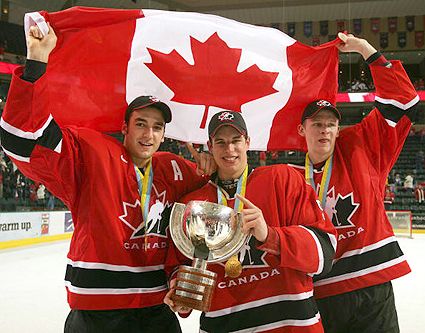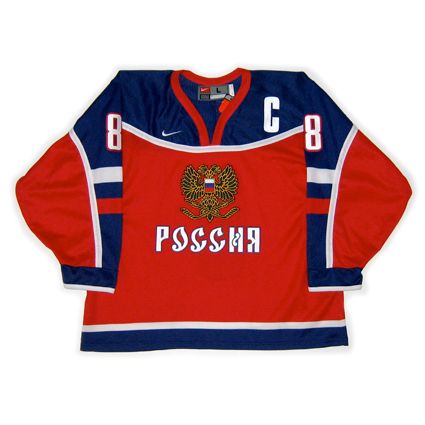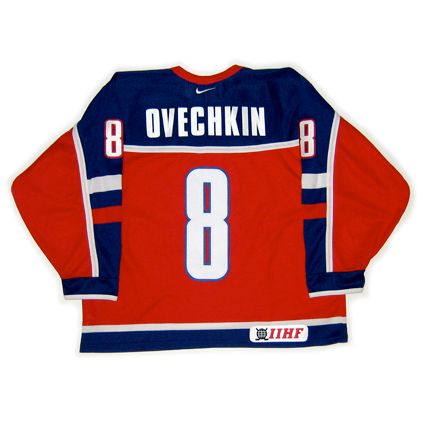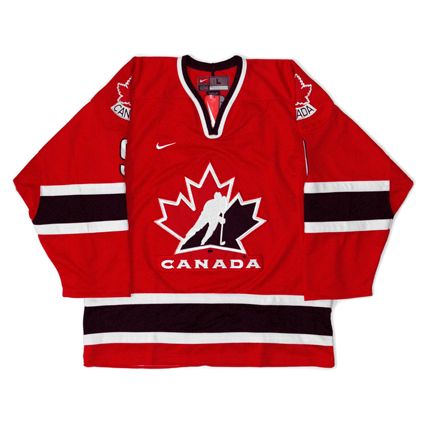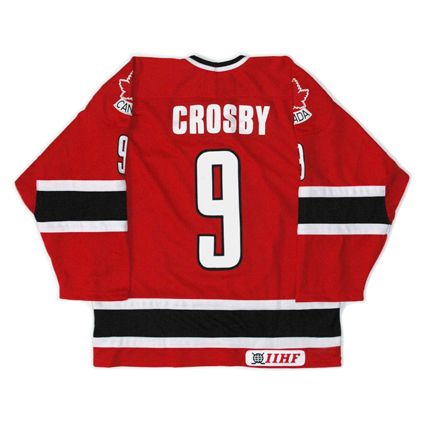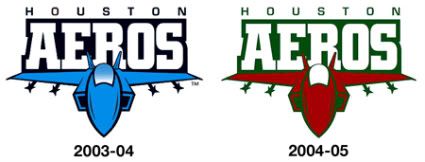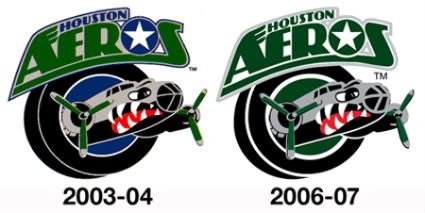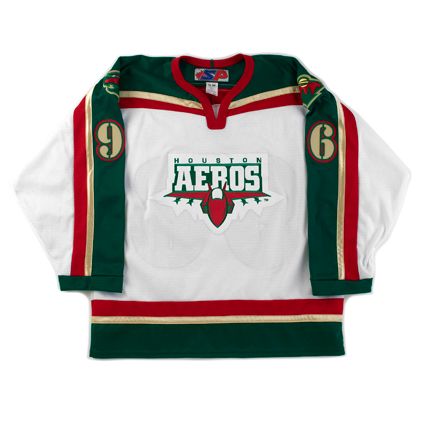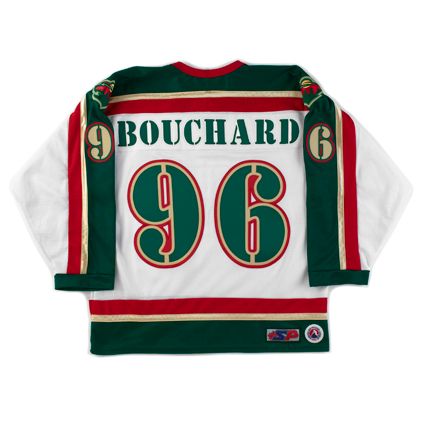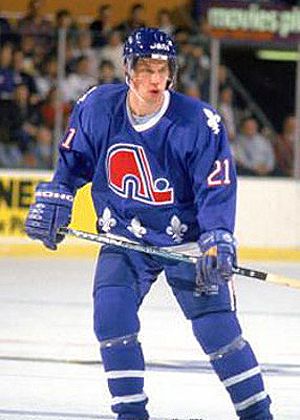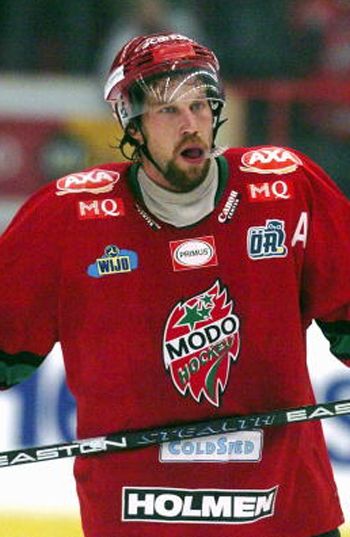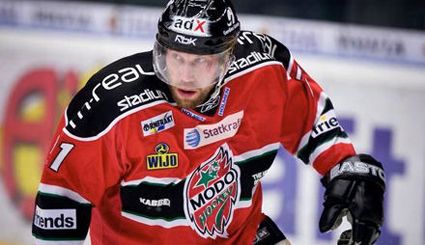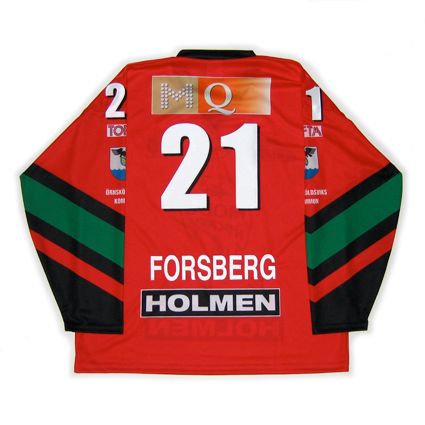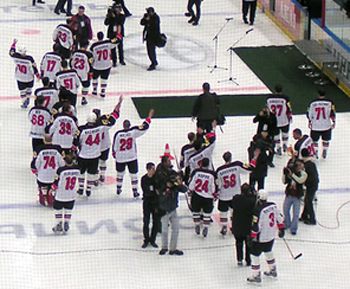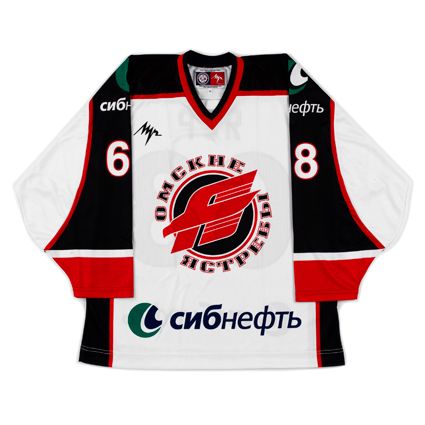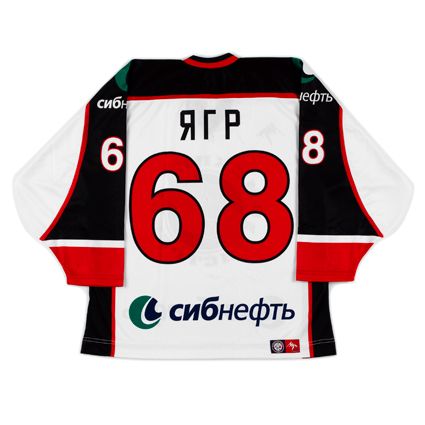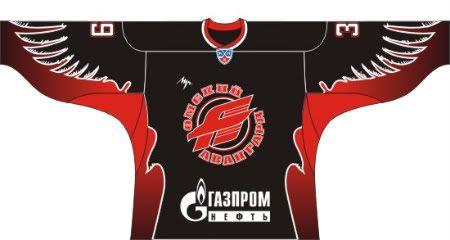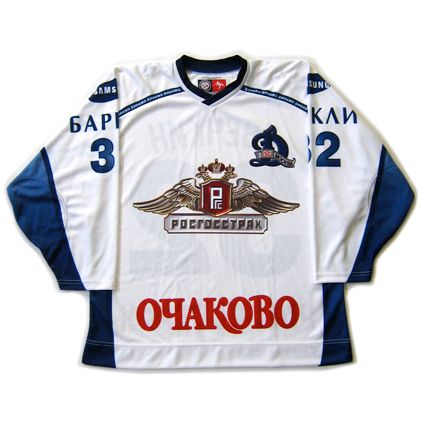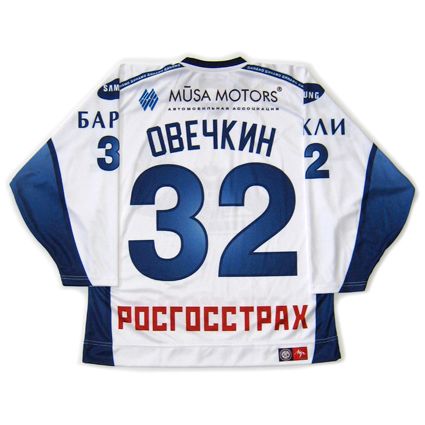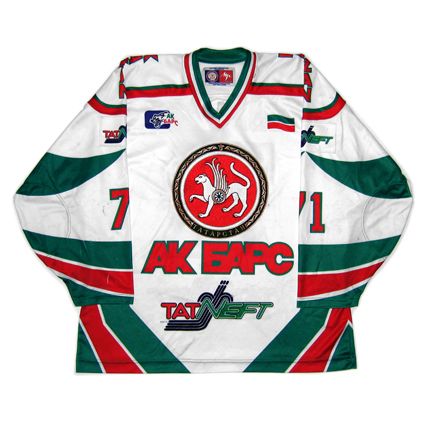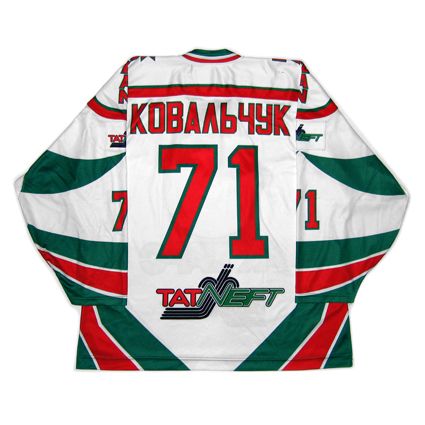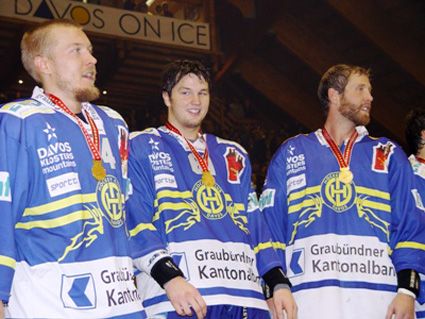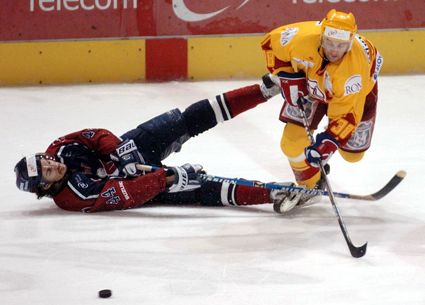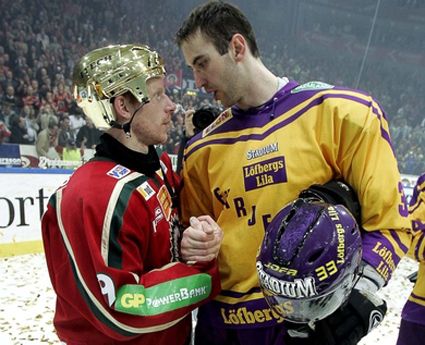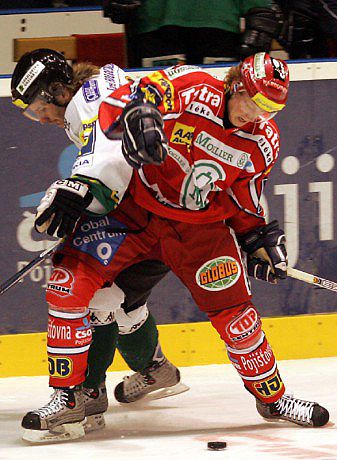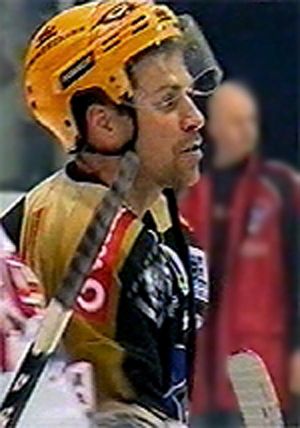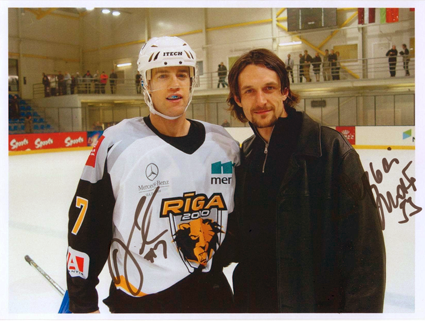Saturday, September 22, 2012
2005 Russian National Team Alexander Ovechkin Jersey
The final entry in "The Lockout Collection" highlights the 2005 World Junior Championships.
Unfortunately, video of Ovechkin at the 2005 World Juniors is disappointingly limited on YouTube, but here is a brief look at the skills put on display during the tournament.
With the NHL Lockout in full force, the highlight of the North American hockey calendar was the 2005 World Junior Championships, held primarily in Grand Forks, North Dakota with some games taking place in nearby Thief River Falls, Minnesota.
The 2005 edition is widely regarded as having the the deepest talent pool of any World Juniors ever held due to the number of great young players who would have, in any ordinary year, been otherwise employed in the NHL.
Patrice Bergeron of the Boston Bruins had already played a a full season in the NHL and certainly would have not been made available by the Bruins mid-season under normal circumstances.
Patrice Bergeron would have remained with
the Bruins had there not been a lockout
Other players who likely would have been in the NHL at the time include 2003 draft picks Ryan Suter and Patrick Eaves of the United States, Dion Phaneuf, Jeff Carter, Brent Seabrook, Ryan Getzlaf, Mike Richards and Corey Perry of Canada, Dan Fritsche of the United States and Andrei Kostitsyn of Belarus.
2004 draft picks Alexander Ovechkin and Evgeni Malkin of Russia, Canadian Andrew Ladd and Czech Rotislav Olesz all spent time in the NHL during the 2005-06 season and had their debuts delayed by the lockout.
Malkin consoles a distraught Ovechkin following the Russian loss in the finals, a game where Ovechkin was knocked out early with an injury
Other notable players who participated in the 2005 World Junior Championships include Sergei Kostitsyn of Belarus, Ladislav Smid, David Krejci and Michael Frolik of the Czech Republic, Lauri Korpikoski and Tukka Rask of Finland, Andrei Meszaros and Jaroslav Halak of Slovakia, Johan Fransson, Nicklas Grossmann, and Loui Ericksson of Sweden, Alexander Radulov of Russia and Drew Stafford, Ryan Callahan, Phil Kessel and Corey Schneider of the United States.
Phil Kessel impressed for the United States
In addition to those players already mentioned, the assemblage of talent on Team Canada was beyond impressive, and was demonstrated by their march through the tournament, finishing with a perfect 6-0 record to capture the gold medal and a 41-7 margin in goals. Also taking the ice for Canada in Grand Forks were future NHLers Brent Seabrook, Shea Weber, Colin Fraser, Cam Barker, Nigel Dawes, Braydon Colburn and one Sidney Crosby.
Crosby and Ovechkin squaring off at the stellar 2005 World Junior Championships
Bergeron, Crosby and Perry celebrate Canada's 2005 World Junior Championship
Today's featured jersey is a 2005 Russia National Team Alexander Ovechkin jersey. Ovechkin was the captain of Russia at the 2005 World Juniors and his jersey sports the captains "C" as well as the original International Ice Hockey Federation logo patch on the lower back of the jersey, as worn by all the players in the tournament, with the exception of the United States 1932 throwback jerseys.
Ovechkin would finish the tournament third in scoring with 11 points from 7 goals and 4 assists in 6 games, leading Russia to the gold medal game, but was forced out of the contest with a shoulder injury that would keep him out of action for Moscow Dynamo for two months following the tournament.
Bonus jersey: Today's bonus jersey is a 2005 Canada National Team Sidney Crosby jersey as worn during the 2005 World Junior Championships. His actual game worn jersey was stolen following the tournament by an Air Canada baggage handler in Montreal. It was later recovered in a mailbox in Quebec.
Here is a profile of Ovechkin aired during the 2004 World Juniors. It's a bit short of game footage, but does have an interview with the then 17 year old.
Finally, a compliation of highlights of Ovechkin prior to joining the NHL, which includes some clips of him in his Russian National Team jersey.
Labels:
Canada,
Crosby Sidney,
Lockout 2004,
Ovechkin Alexander,
Russia
Friday, September 21, 2012
2004-05 Houston Aeros Pierre-Marc Bouchard Jersey
"The Lockout Collection" finds itself deep in the heart of Texas for a look at a jersey from the American Hockey League.
During the lockout of 2004-05, rules allowed NHL teams to assign younger players to the American Hockey League to ride buses all season while veteran players got to pick which country and team they would play for while collecting buckets full of money playing for Russian teams in particular.
Case in point, Jason Spezza.
Spezza had already played for the Ottawa Senators in 2002-03 and a full season for the Senators in 2003-04 when he found himself right back in Binghamton of the AHL. While there, Spezza scored 32 goals and 85 assists to lead the league with 117 points and capture the Les Cunningham Award as the Most Valuable Player in the AHL.
Other players with NHL experience in the AHL that season included leading goal scorer Mike Cammalleri, Eric Staal, Joni Pitkanen and Pierre-Marc Bouchard.
From a Sports Illustrated article by Michael Farber from November 21, 2005:
Today's featured jersey is a 2004-05 Houston Aeros Pierre-Marc Bouchard jersey. This was the first season for this jersey style, as the Aeros were purchased by their parent club, the Minnesota Wild, who then proceeded to dress the Aeros jerseys in the Wild's basic jersey template, sadly replacing the modern take on the old WHA Aeros jerseys.The A-TeamHaving honed their skills in the AHL during the lockout, young players like Carolina's Eric Staal are becoming stars.Hurricanes sensation Eric Staal didn't adore every minute of his postgraduate American Hockey League year--getting stuck in a bus during a blizzard in Hartford does not build character as much as a profound distaste for the Greyhound life--but the extra season in the A has helped turn the 21-year-old center into a dangerous scorer and a surprise candidate for the Canadian Olympic team. Because of the lockout-driven demotion, Staal, a first-round draft pick in 2003 who seemed overmatched as a rookie with Carolina in '03-04, has gone from being a Lowell (Mass.) Lock Monster to a lock as a franchise NHL player. "Playing 22, 23 minutes a game in the A and having some success there made me a lot more confident," says Staal, who has led the Hurricanes to the top of the Southeast Division and through Sunday was tied for third in the league in scoring with 28 points.The lockout rocked the NHL, but among the ancillary benefits has been the emergence of young players who apprenticed for an additional season in the minors. The 6'3", 189-pound Staal, who added an extra gear to his already powerful skating, and the Senators' fabulous center, Jason Spezza, who improved decision-making, used the year to advance from promising to dominating. Meanwhile, a season with the AHL champion Philadelphia Phantoms transformed highly touted Flyers defenseman Joni Pitkanen, 22, from a Bambi on the blue line into a puck-rushing, physical force. "That was the old hockey they were playing down there, all that hooking and grabbing and holding," says Carolina general manager Jim Rutherford. "They learned how to fight through that.""Our team is a product of the lockout," says G.M. Dave Taylor, whose Kings nightly dress as many as nine players who were in the AHL last season. "These guys might have been eight- or nine-minute players if there'd been an NHL season, but last year they didn't have to shuttle back and forth. These AHL guys just picked up where they left off."The anomalous lockout year provided a window to the ways of old-time hockey. Three decades ago the then dominant Canadiens routinely let future stars marinate in the minors. In the 1990s, when the Devils were a power, they made young talent spend time at finishing school. ( Goalie Martin Brodeur had one full AHL season and 2001 Selke Trophy winner John Madden had two.) But in the salary-capped NHL, there seems to be less inclination to keep potential impact players in the AHL. "With the cap and the league becoming more competitive, teams will be looking for an early return [from players] more than ever," says Rutherford.With the retirements of greats like Brett Hull, Mark Messier and Scott Stevens, this postlockout season is a demarcation line in NHL history. While it is premature to proclaim Staal, Spezza and Pitkanen as the league's heir apparents, on their first report cards of '05-06, they all get an A.
Also proving quite unpopular with the Aeros fanbase was the complete elimination of the classic Aeros bomber logo, which was replaced by the modern jet fighter logo, first introduced the previous season in a steely blue color on their 10th Anniversary patch.
The conversion of the jet to the Iron Range Red color of the Wild in 2004-05 only made matters worse, as the illustration of the jet looked enough like a Russian MiG-25 with it's square air inlets to begin with, but now rendered in a decidedly communist red color made the elimination of the original bomber logo from the jerseys completely unacceptable to the fans.
The Aeros used today's featured jersey for the 2004-05 and 2005-06 seasons, before bringing back the original bomber logo, only now with the former blue elements changed to green.
When the Aeros first changed over to the Minnesota Wild's jersey colors and template, despite the logo controversy, they did select a fantastic military-inspired stencil font for the names and numbers that set it apart from the parent club's furry numbers and in the process, brought the military theme back to the Aeros jerseys not seen since their beloved classic jerseys, last used in 2002-03.
Bouchard would lead the Aeros with 12 goals and 42 assists for 54 points despite only playing in 67 games that season. The Aeros would qualify for the Calder Cup playoffs, although they would be quickly eliminated by the Chicago Wolves 4 games to 1 in the first round.
The conversion of the jet to the Iron Range Red color of the Wild in 2004-05 only made matters worse, as the illustration of the jet looked enough like a Russian MiG-25 with it's square air inlets to begin with, but now rendered in a decidedly communist red color made the elimination of the original bomber logo from the jerseys completely unacceptable to the fans.
The Aeros used today's featured jersey for the 2004-05 and 2005-06 seasons, before bringing back the original bomber logo, only now with the former blue elements changed to green.
When the Aeros first changed over to the Minnesota Wild's jersey colors and template, despite the logo controversy, they did select a fantastic military-inspired stencil font for the names and numbers that set it apart from the parent club's furry numbers and in the process, brought the military theme back to the Aeros jerseys not seen since their beloved classic jerseys, last used in 2002-03.
Bouchard would lead the Aeros with 12 goals and 42 assists for 54 points despite only playing in 67 games that season. The Aeros would qualify for the Calder Cup playoffs, although they would be quickly eliminated by the Chicago Wolves 4 games to 1 in the first round.
Today's video selection shows the Philadelphia Phantoms winning the 2005 Calder Cup with a roster that featured Jeff Carter, Patrick Sharp, Mike Richards, Dennis Seidenberg, R. J. Umberger, Joni Pitkanen and Antero Nittymaki, many of whom may very well have spent the season in the NHL if there had not been a lockout that season.
Labels:
Bouchard Pierre-Marc,
Houston Aeros,
Lockout 2004
Thursday, September 20, 2012
2004-05 MODO Hockey Peter Forsberg Jersey
The fourth jersey of "The Lockout Collection" sees us travel up to Sweden for our next stop.
Here is a Swedish TV report on Forsberg playing for Modo in the 2004-05 season, where he can be seen wearing the home version of today's featured jersey.
As we have seen, while many NHL players followed the money and found employment in Russia during the NHL lockout, many players chose other countries, with Sweden being the second most popular, especially among native Swedes, naturally.
One such player was Peter Forsberg, who returned to his hometown of Örksköldsvik to play for MODO Hockey, the club for whom he made his professional debut in 1989-90.
Forsberg skated for MODO for six seasons, which included winning both the Golden Puck as Swedish Player of the Year and the Golden Helmet for Swedish Elitserien Most Valuable Player in 1993 and repeated the feat of winning both again 1994 before becoming a member of the NHL's Quebec Nordiques for one season prior to their relocation to Denver, Colorado where they became the Avalanche.
Forsberg skated for MODO for six seasons, which included winning both the Golden Puck as Swedish Player of the Year and the Golden Helmet for Swedish Elitserien Most Valuable Player in 1993 and repeated the feat of winning both again 1994 before becoming a member of the NHL's Quebec Nordiques for one season prior to their relocation to Denver, Colorado where they became the Avalanche.
Injuries began to take their toll on Forsberg, who had his spleen removed during the 2001 NHL playoffs, causing him to miss not only the remainder of the playoffs, but factored into his decision to take the following regular season off before returning for the 2002 playoffs. He was also limited to 39 games in 2003-04 following his MVP season the year prior, so it should not have been a surprise when injuries affected his return to MODO as well.
Coached by his father Kent Forsberg and teamed with twins Daniel and Henrik Sedin as well as Markus Näslund, who all hail from Örksköldsvik, Forsberg scored 39 points, on 13 goals and 26 assists, but he was limited to 33 games of the 50 game Swedish schedule due to a broken bone in his and and surgery following a dislocated wrist.
MODO was eliminated in the first round of the playoffs by Färjestads BK in six games as Forsberg was only able to appear in one game in the series.
After a return to the NHL with the Philadelphia Flyers and a stint with the Nashville Predators, Forsberg had surgery on his foot, which would would keep him out of all but 16 Colorado Avalanche games in 2007-08, which included seven playoff games. The 2008-09 season would see him attempt to play once more, but only make it into three games with MODO, where he would score a goal and record two assists. He managed 23 games with MODO in 2009-10, scoring 30 points, and four games for Sweden in the 2010 Olympics, all of which gave him enough encouragement to return to the NHL with Colorado, but it was an ill-fated attempt which ended after only two games in 2010-11 bringing and end to his career once and for all.
Today's featured jersey is a 2004-05 MODO Hockey Peter Forsberg jersey as worn during his time in Sweden during the NHL lockout. This jersey is typical of many European jerseys in that it features no less than 19 sponsor logos, which sometimes make it hard to recognize which word is actually the player's name, especially lesser known ones, thanks in part to the inconsistency in Europe regarding the players names sometimes being positioned below the back numbers and sometimes in the more traditional location above the numbers.
The jersey is all dye-sublimated except for the name and numbers, which are sewn on twill material, including the drop-shadow for the numbers.
Based on the change in jersey style, we believe this to be the one goal he scored in his attempted return to the ice in 2008-09 for MODO against Skellefteå.
This final highlight is from the 1993-94 playoffs, where Forsberg scores in overtime to give MODO the victory.
Labels:
Forsberg Peter,
Lockout 2004,
MODO
Wednesday, September 19, 2012
2004-05 Avangard Omsk Jaromir Jagr Jersey
Next up in "The Lockout Collection" is yet another jersey from the Russian Superleague.
With the players locked out by the owners in 2004-05, Jaromir Jagr first signed up to play with HC Kladno in the Czech Republic, which was his first professional team when he was only 16 years of age. After 17 games with Kladno, he left for Avangard Omsk of the Russian Superleague.
Jagr, with Alexander Perezhogin, attack the Lada Togliatti net
While in Omsk, which is located 1700 miles east of Moscow in Siberia, Jagr would score 16 goals and 22 assists for 38 points in 32 games. Avangard, which translates to "Vanguard", would finish in 6th place in the RSL standings and draw third place Metallurg Magnitogorsk, one of the few teams actually located even further east of Omsk.
Magnitogorsk would draw first blood with a 5-2 win and then put Omsk on the brink of elimination in their best-of-five series by taking the critical second game by a 2-1 score. Avangard would stay alive with a 4-1 win in Game 3 and even the series with a 4-2 win in Game 4, to force a deciding Game 5. Omsk would win 4-3 in overtime on a goal by Jagr to stun favored Metallurg by winning three straight after being down 2 games to none.
Their reward for knocking of Metallurg would be to face regular season champions Dynamo Moscow, whose 2004-05 roster included Pavel Datsyuk and Alexander Ovechkin. Omsk would continue their winning streak with a 3-2 win, but would be destroyed 11-0 in Game 2. They would drop a heartbreaker 1-0 in Game 3 and would be eliminated by the eventual champions 3-1 in Game 4.
Unlike in North American leagues, Omsk did face off against Lokomotiv Yarosalvl, the fifth seed, in a best-of-three series to determine the bronze medal winners. Lokomotiv would sweep Omsk in two straight by scores of 6-3 and 5-4. Jagr would finish with 14 points in their 11 playoff games.
Avangard Omsk had won the RSL title the previous season, and as a result, were entered in the IIHF European Champions Cup for 2004-05. Omsk was grouped with Dukla Trencin of Slovakia and HV71 from Sweden. Omsk would dominate with an opening 6-1 pounding of Dukla Trencin and destroy HV71 by a resounding 9-0 score to advance to the finals versus the Group B winner Oulun Karpat from Finland. Karpat had advanced with a 4-1 over HC Zlin from the Czech Republic and a 6-3 defeat of the Frankfurt Lions of Germany.
Tied at 1 after regulation, Avangard Omsk would prevail when Jagr would beat future Minnesota Wild goaltender Niklas Backstrom at 14:38 of overtime with assists going to Maxim Shushinsky and Nikita Nikitin to give Omsk the inaugural European Champions Cup title.
Avangard Omsk celebrating their 2005 European Champions Cup victory
Jagr would return to play three more seasons in the NHL for the New York Rangers, but would return to Omsk in 2008, signing a two year contract for a reported $10 million a season.
Today's featured jersey is a 2004-05 Avangard Omsk Jaromir Jagr jersey. It features Jagr's familiar #68 and his name on the back in Cyrillic, which is surprisingly even shorter than in English, coming in at a mere three characters.
Lutch jerseys, such as today's featured jersey, are easily obtained from our sponsors ProRussianJerseys.com in a variety of teams and players. Quality-wise, they are very nice jerseys, equal to the Tackla jerseys worn by international teams in the early 90's. The printing quality is first rate and the jerseys are quite durable and make a fine, and unique, addition to any jersey collection sure to elicit comments whenever you wear one.
Here is Jagr scoring in spectacular fashion in overtime in Game 5 to eliminate Metallurg Magnitogorsk in the 2005 playoffs.
Next up is a very well done highlight reel of Jagr playing for Avangard Omsk in the 2004-05 season. I only wish I could find videos of this quality every day.
Here is a feature on Jagr wearing his "Hawk Wings" jersey during the 2008-09 season from the outstanding Russia Today channel.
Labels:
Avangard Omsk,
Jagr Jaromir,
Lockout 2004
Tuesday, September 18, 2012
2004-05 Dynamo Moscow Alexander Ovechkin Jersey
The next entry in "The Lockout Collection" features another jersey from the Russian Superleague.
Alexander Ovechkin, born on this date in 1985, would have most certainly been in the NHL during the 2004-05 season, having been drafted first overall by the Washington Capitals earlier in the year, but with the NHL season cancelled, Ovechkin would return home to Russia to play one final season for Dynamo Moscow.
Ovechkin began playing for Dynamo at the age of just 16 in the 2001-02 season and in 21 games, he scored just 2 goals and 2 assists. The next season would see him play in 40 games, with 8 goals and 7 assists for 15 points, while in 2003-04, Ovechkin would finish third in scoring for Dynamo, with 23 points in 53 games.
He would make his North American debut in the 2003 World Juniors in Canada, as Russia would defeat Canada on their home soil. He would return for the 2004 World Cup of Hockey and then again to compete in the 2005 World Junior Championships in Grand Forks, North Dakota, but would suffer a shoulder injury in the gold medal game that would force him to miss nearly two months of the Russian Superleague season. Despite the missed time, he would finish 5th in team scoring with 27 points from 37 games and would return in time for the playoffs, despite the shorter 60 game RSL schedule.
Dynamo had their share of NHL talent that season due to the lockout, and would finish first overall during the regular season with 126 points from 60 games, eight clear of second place Lada Togliatti. Notable NHL players for Dynamo that season included Pavel Datsyuk, Maxim Afinogenov, Andrei Markov, Alexander Frolov and ten games from Martin Havlat at one point in the regular season.
With eight of 16 teams qualifying for the playoffs, first seeded Dynamo would draw Nizhnekamsk Neftkhimik, who would fall in three quick games by scores of 2-0, 4-2 and 2-1.
Next up for Dynamo was Avangard Omsk, who upset 3rd ranked Metallurg Magnitogorsk in the opening round, and were led by RSL leading scorer Maxim Shushinsky and Jaromir Jagr. Dynamo would drop the first game by a 3-2 score, but would heed the wake up call and punish Omsk 11-0 in Game 2. Game 3 would be a tight 1-0 victory for Dynamo and they would advance to the finals with a 3-1 win in Game 4.
Waiting for Dynamo was second seeded Lada Togliatti. Dynamo would take Game 1 by a 3-1 score, go up 2 games to none with a 2-0 shutout and capture the title with a 2-1 win in Game 3 for a sweep of the best-of-five series.
Today's featured jersey is a Lutch 2004-05 Dynamo Moscow Alexander Ovechkin jersey as worn in his final season in Russia before coming over to play in the NHL. The front features the logo of team sponsor Rosgosstrakh, the Russian National Insurance Company with Ochakovo Lager in red below, with the iconic Dynamo "D" logo on the upper left chest.
The back features Ovechkin's name in Cyrillic and the #32 he wore for Dynamo over a simplified Rosgosstrakh wordmark in red. The jersey is all dye-sublimated, as evidenced by the fading of the blue areas of the sleeves and the subtle radial fading of the numbers, as they are lighter in the center and get darker toward the outer edges.
Lutch jerseys such as today's featured jerseys are easily obtained from our sponsors ProRussianJerseys.com in a variety of teams and players. Quality-wise, they are very nice jerseys, equal to the Tackla jerseys worn by international teams in the early 90's. The printing quality is first rate and the jerseys are quite durable and make a fine, and unique, addition to any jersey collection sure to elicit comments whenever you wear one.
Excuse the "Tom Waits of Russia" soundtrack on this collection of Ovechkin highlights from 2003 while playing for Dynamo.
Labels:
Dynamo Moscow,
Lockout 2004,
Ovechkin Alexander
Monday, September 17, 2012
2004-05 Ak Bars Kazan Ilya Kovalchuk Jersey
The first jersey to be featured in "The Lockout Collection" is a gorgeous jersey from the Russian Superleague.
With no NHL season to compete in because of the 2004-05 lockout, many NHL players looked to Europe for competition and paychecks, and no team came close to doling out the cash like Ak Bars Kazan of the Russian Superleague.
Ak Bars, which means "Snow Leopards" and is taken from the Tartarstan coat of arms, signed 11 NHL players, including Russians Alexi Kovalev, Ilya Kovalchuk, Darius Kasparitits, Nikolai Khabibulin, Alexi Morozov and Alexei Zhitnik, plus Canadians Vincent Lecavalier, Brad Richards, both fresh off of winning the Stanley Cup with the Tampa Bay Lightning and the World Cup of Hockey with Canada, Dany Heatley and goaltender Fred Brathwaite in an attempt to win the championship to celebrate the city of Kazan's 1000th anniversary.
We highly recommend reading both of the following articles about Lecavalier and his adjustment to life in Russia during the lockout. The first is from the St. Petersburg Times titled "Rough Translation" and the second from Sports Illustrated called "Tampa Bay to Tatarstan".
Ak Bars would post a 37-17-5 record, good for fourth place in the Superleague, one point behind Metallurg Magnitogorsk who fielded a team that included future NHL star Evgeni Malkin and current NHLers Peter Sykora, Sergei Gonchar, Patrik Elias and goaltender Evgeni Nabokov.
With the top eight clubs making the playoffs, Kazan drew fifth seeded Lokomotiv Yaroslavl, who had finished nine points behind them in the regular season. The best-of-five series was decided in four games, as Lokomotiv took the first two games 2-1 and 4-3. Ak Bars won the third 1-0 before falling 2-1 in Game 4, ending the hopes of bringing the championship to Kazan during it's anniversary celebration.
Today's featured jersey is a 2004-05 Ak Bars Kazan Ilya Kovalchuk jersey, complete with his name on the back in Cyrillic. The jersey is beautiful example of the state of the art dye-sublimation, accented with a equally beautiful embroidered main crest. This jersey features the #71 that Kovalchuk commonly uses while playing for the Russian National Team, as well as during his time with Spartak Moscow prior to coming over to play in the NHL, as Kovalchuk's more familiar #17 is retired by the Russian National Team in honor of Soviet legend Valeri Kharlamov.
This is one of our favorite jerseys in the Third String Goalie collection with it's vibrant colors and bold striping along with the Cyrillic lettering, which never fails to attract attention.
Lutch jerseys such as today's featured jersey are easily obtained from our sponsors ProRussianJerseys.com in a variety of teams and players. Quality-wise, they are very nice jerseys, equal to the Tackla jerseys worn by international teams in the early 90's. The printing quality is first rate and the jerseys are quite durable and make a fine, and unique, addition to any jersey collection sure to elicit comments whenever you wear one.
Here are some video clips of Ak Bars Kazan from the lockout season. The first one features Kovalchuk, while the second has both Kovalchuk and Lecavalier.
This next clip shows an outstanding tic-tac-toe passing play that is a joy to watch unfold.
This final one features just Lecavalier in a variety of action while playing for Ak Bars.
Labels:
Ak Bars Kazan,
Kovalchuk,
Lockout 2004
Sunday, September 16, 2012
The 2004-05 NHL Lockout
As of midnight eastern time last night, the NHL owners have locked out the players yet again following the inability of the NHL and the player's association to come to terms on a new collective bargaining agreement.
The last time this situation reared it's ugly head, an entire NHL season was lost to the labor dispute, but that did not stop the players from playing, as many younger players were either assigned to or remained at the American Hockey League affiliate of their NHL clubs, while quite a number of NHLer's found work in Europe, playing in leagues from Great Britain to Russia and from Norway to Italy.
For the next week, we will revisit the lockout of 2004 and tell the story of some of those players.
When the 2004 World Cup of Hockey concluded on September 14th, 2004, it was the last hockey at the top professional level that would be played in North America for over a year.
While Canada was still celebrating it's World Cup championship, the collective bargaining agreement (CBA) between the NHL and the NHL Players Association expired on this date in 2004, prompting the owners to lock out the players until a new CBA that addressed the owners financial concerns. The owners were spending 76% of their revenues on player salaries at the time and, as a group, lost $273 million during the 2002-03 season.
The start of the season was lost as the two sides failed to reach an agreement. The two sides continued to negotiate with some progress made, but eventually on February 16th, 2005 the league canceled the remainder of the season, ensuring the Stanley Cup would not be awarded for the only time since 1919. It was the first time a major professional sports league would cancel an entire season because of a labor dispute.
Progress was finally made in late March when an upper and lower limit on team payrolls was proposed by the NHLPA, which the NHL found to be a workable idea, which was finally hammered out on July 13th of 2005 and approved by the players on July 21st, with 87% of the vote, and unanimously by the owners the following day, officially ending the lockout.
The final agreement guaranteed the players 54% of total NHL revenues in salary and a $39 million salary cap, with a minimum of approximately $23 million, for the first year of the new agreement. In addition, all current contracts were rolled back 24%, no single player could earn more than 20% of his team's total payroll, a revenue sharing plan were the top ten clubs would contribute to a pool split among the bottom ten clubs, unrestricted free agency eventually being reduced to age 27 rather than the prior age of 31, a cap on the size of entry level contracts and a much higher minimum salary than before.
While the game was getting revamped financially, the rules were also given serious scrutiny, and two days of meetings led by Brendan Shanahan, "The Shanahan Summit" resulted in ten recommendations to the NHL and NHLPA that led to several major rules changes when the game returned from the lockout.
Tie games were gone, now replaced by a shootout. Zero tolerance for hooking, holding, tripping, slashing, cross-checking and interference was now the norm. The center red line was done away with concerning two-line passes, goaltender equipment was made smaller and the area where goaltenders could play the puck behind the goal line was reduced. The offensive zones were made slightly larger by moving the blue lines closer together, the tag-up offside rule as reinstated and anyone shooting the puck over the glass in their defensive zone would receive a delay of game penalty. Finally, any player who instigates a fight in the last five minutes of a game would face a game misconduct and a one-game suspension, which would double with each additional incident, as well as a fine for their coach.
There was also talk in Canada about what to do with the Stanley Cup that season, with many off-the-wall proposals, but some ideas that honored the original spirit of the cup to be awarded to "the leading hockey club in Canada" and featuring either a playoff with the championship winning clubs from various leagues at various levels or a knockout competition, similar to the FA Cup in England, open to any and all who could field a team.
While all this negotiating was going on, 388 members of the NHLPA played in Europe during the 2004-05 season in a variety of leagues and countries. 43 union members chose Switzerland for the season, including Martin St. Louis, Daniel Briere, David Aebischer, Jose Theodore and Alex Tanguay, while Joe Thornton, Niklas Hagman and Rick Nash helped HC Davos to the Swiss Championship.
Hagman, Nash and Thornton celebrating
their Swiss championship title
In Slovakia, the late Pavol Demitra won the scoring title for Dukla Trencin and Miroslav Satan was the playoff MVP, leading Slovan Bratislava to the title. Michal Handzus, Vladimir Orzagh and Richard Zednik also played in Slovakia on the same forward line for Zvolen.
Pavol Demitra leaving others in his wake after returning home to compete for Dukla Trencin
Daniel Alfredsson, P. J. Axelsson, Sami Salo, Sami Pahlsson and Christian Backman helped the Frolunda Indians to the Swedish Championship while Henrik Zetterberg won the scoring title for Timra IK. Peter Forsberg, Markus Naslund, Adrian Aucoin, Daniel Sedin and Henrik Sedin all skated for MODO, while Mike Knuble, Brendan Morrison and Kristian Huselius played in Linkoping and Zdeno Chara joined Färjestads BK. In all, 75 NHL players skated for clubs in Sweden that season.
Daniel Alfredsson met up with a familiar NHL foe, Zdeno Chara in Sweden's Elitserien
Ales Hemsky helped Pardubice win the championship, while Milan Hejduk and Jan Bulis finished second and third in the scoring race among the 51 players who spent time in the Czech league. Other notable players were Martin Straka and Martin Rucinsky.
Ales Hemsky battles for HC Pardubice
Moscow Dynamo won the Russian championship with Maxim Afinogenov, Artem Chubarov, Pavel Datsyuk, Andrei Markov and Sergei Samsonov on the roster. Meanwhile, the owners of Ak Bars Kazan tried to win the Russian championship in honor of Kazan's 1000th anniversary and took the unique opportunity to sign numerous NHL players, including Dany Heatley, Darius Kasparitits, Nikolai Khabibulin, Ilya Kovalchuk, Alexi Kovalev, Slava Kozlov, Vincent Lecavalier, Michael Nylander and Brad Richards, only to be eliminated in the first round of the playoffs. Jaromir Jagr found a home with Avangard Omsk, helping them to the European Champions Cup. In all, 78 NHL players skated in Russia that season.
2004-05 Russian champions, Dynamo Moscow
The 45 NHL players who competed in Finland were not the key to success, as Sami Kapanen, Olli Jokinen, Vesa Toskala, Tomas Vokoun, Kimmo Timonen, Miikka Kiprusoff, Duane Roloson and Saku Koivu all played in Finland, but Karpat Oulu won the championship after a dominant season with only one NHLer, Janne Niinimaa, on the roster.
Janne Niinimaa while with Finnish title winners Karpat
The German DEL hosted Eirk Cole, Nathan Dempsey, Mike York, Nick Schultz and Doug Weight among 22 players from the NHL.
Doug Weight suited up for the Frankfurt Lions
Other countries that had NHL talent for the season were Italy (Steve Rucchin and Stephane Quintal), Latvia, (Karlis Skrastins, Sergei Zholtok and Darby Hendrickson), France (Steve Reinprecht), Great Britian (Eric Cairns and Nick Boynton), Hungary (Rob Niedermayer), Denmark (Todd Simpson) and Norway (Scott Hartnell and Mark Bell).
Former Minnesota Wild teammates, Darby Hendrickson and Sergei Zholtok prior to Zholtok sadly passing away during a game in Belarus
The phenomenon of NHL players finding homes in the various European leagues resulted in a recommended book on the subject, "Away Games: The Ultimate Hockey Road Trip Through Europe With the NHL's Best" by Laura Sullivan.
Other NHL veterans chose to play in the minor leagues in North America, such as the UHL and ECHL, while many younger players spent the season in the American Hockey League playing for their parent club's top minor league affiliate, such as AHL leading scorer and MVP Jason Spezza.
In addition to the many NHL players finding places to play all season long, the 2005 World Junior Championship provided a stellar field of teams, bolstered by top young players, several of whom would have normally been active in the NHL at the time. Future NHL regulars Sidney Crosby, Jeff Carter, Shea Weber, Mike Richards, Ryan Getzlaf, Dion Phaneuf, Alexander Ovechkin, Evgeni Malkin, Alexander Radulov, Sergei and Andrei Kotsitsyn, David Krejci, Andrej Mezaros, Jaroslav Halak, Nicklas Grossmann, Loui Ericksson, Cory Schneider, Ryan Suter, Drew Stafford, Ryan Callahan and Phil Kessel all played in Grand Forks, North Dakota that year in what is regarded as the best collection of talent the World Juniors has ever seen.
Sidney Crosby squaring off against Alexander Ovechkin at the 2005 World Junior Tournament
The net effect of this worldwide shuffling of the deck of players gave rise to several opportunities for the hockey jersey collector. With the anger over the lost season and resulting decrease of interest in hockey, prices were down and several opportunities presented themselves to pick up sweaters at quite low prices.
With many name players skating for European or minor league clubs, new opportunities to add colorful and unusual jerseys to ones collection like never before suddenly became available. We here at Third String Goalie will spend the rest of the week sharing our "Lockout Collection" of jerseys from the 2004-05 season. Look for jerseys from Russia, Sweden, the AHL and the 2005 World Juniors.
Today's video section features videos from from Molson Beer, ESPN and some seriously depressed Canadians.
Labels:
Lockout 2004
Subscribe to:
Comments (Atom)

